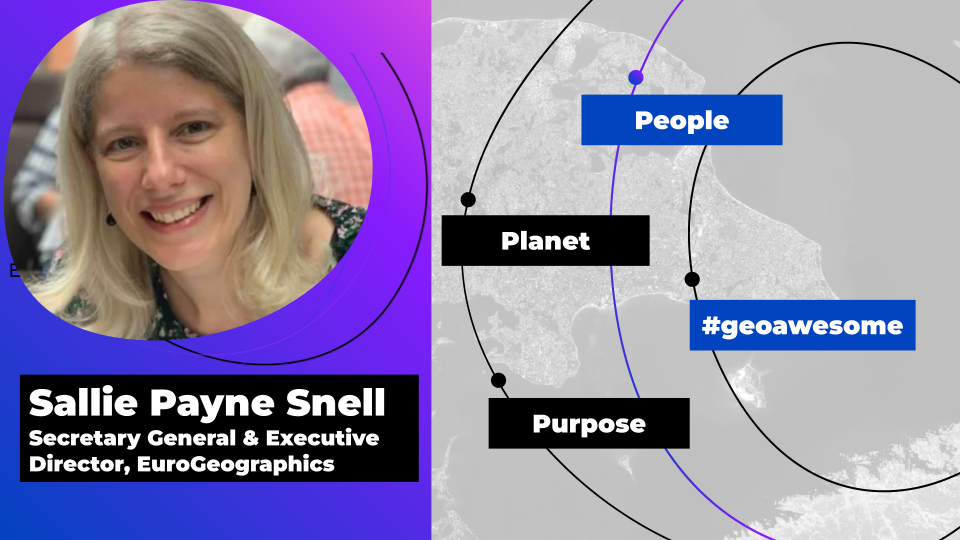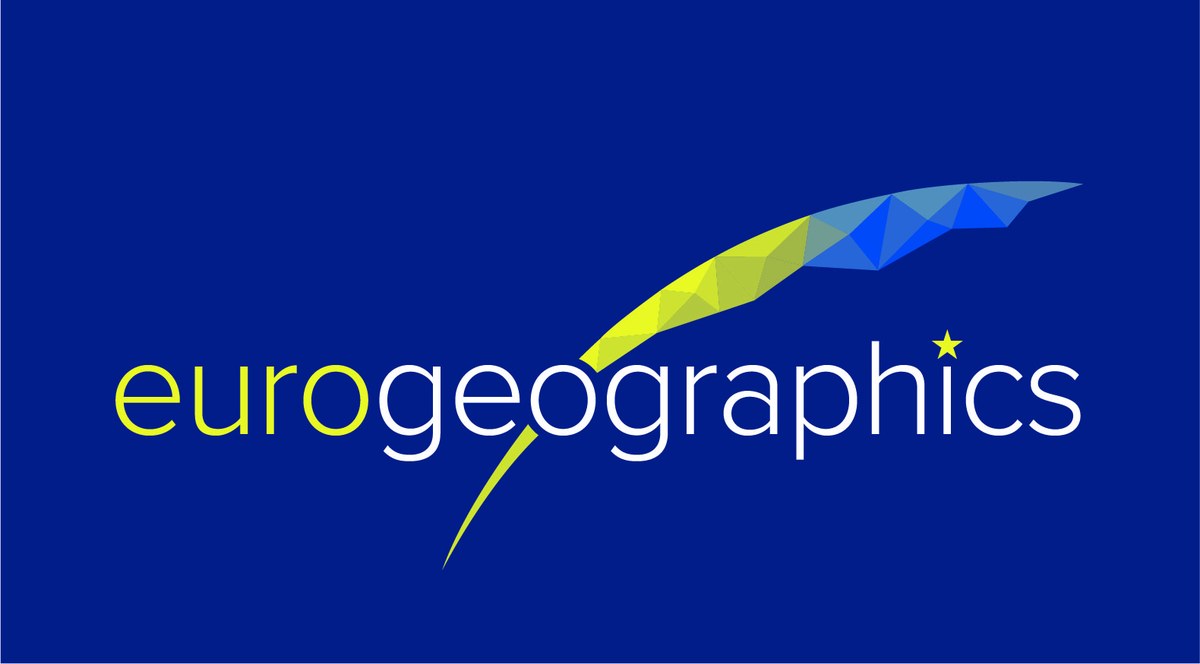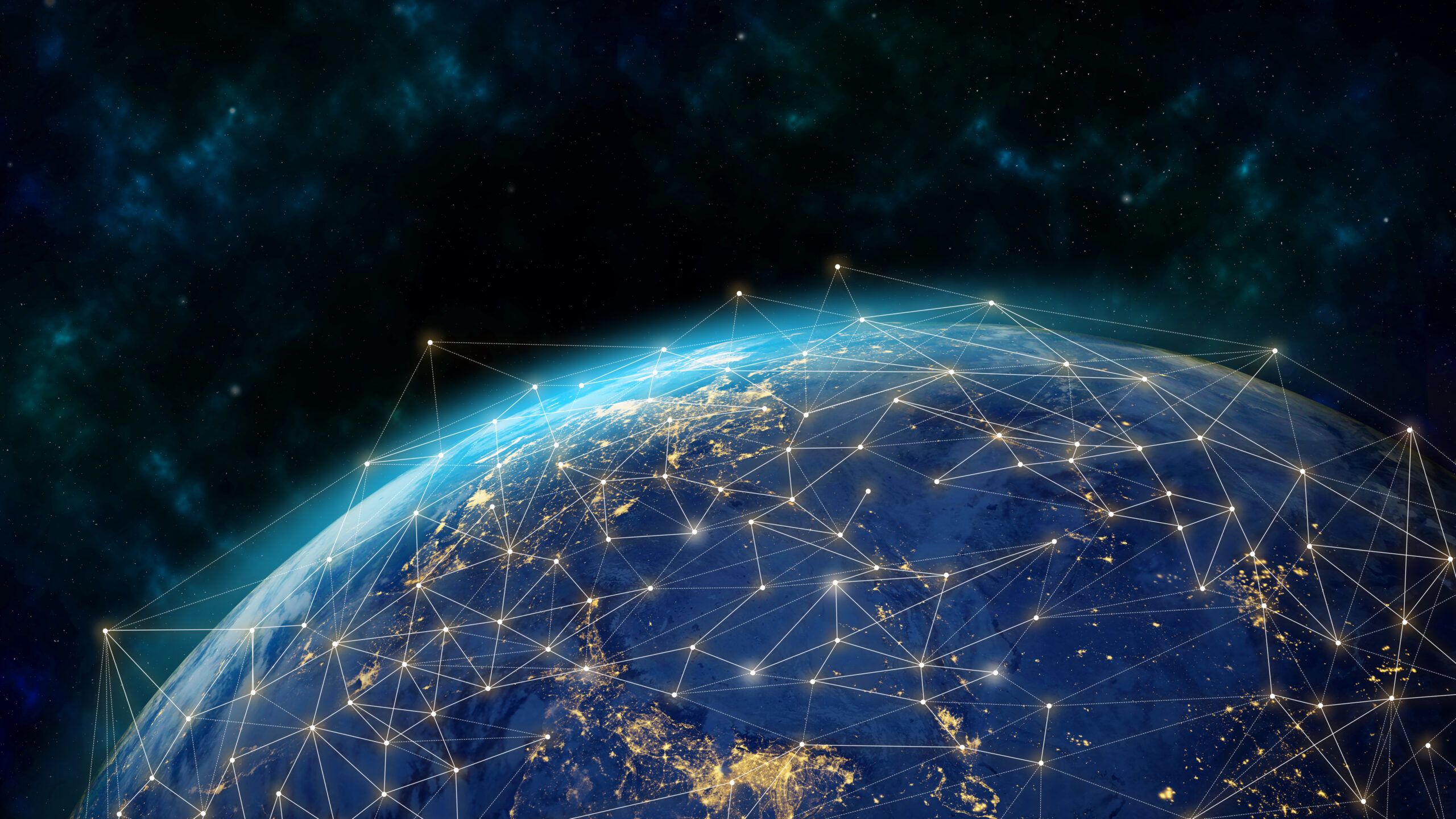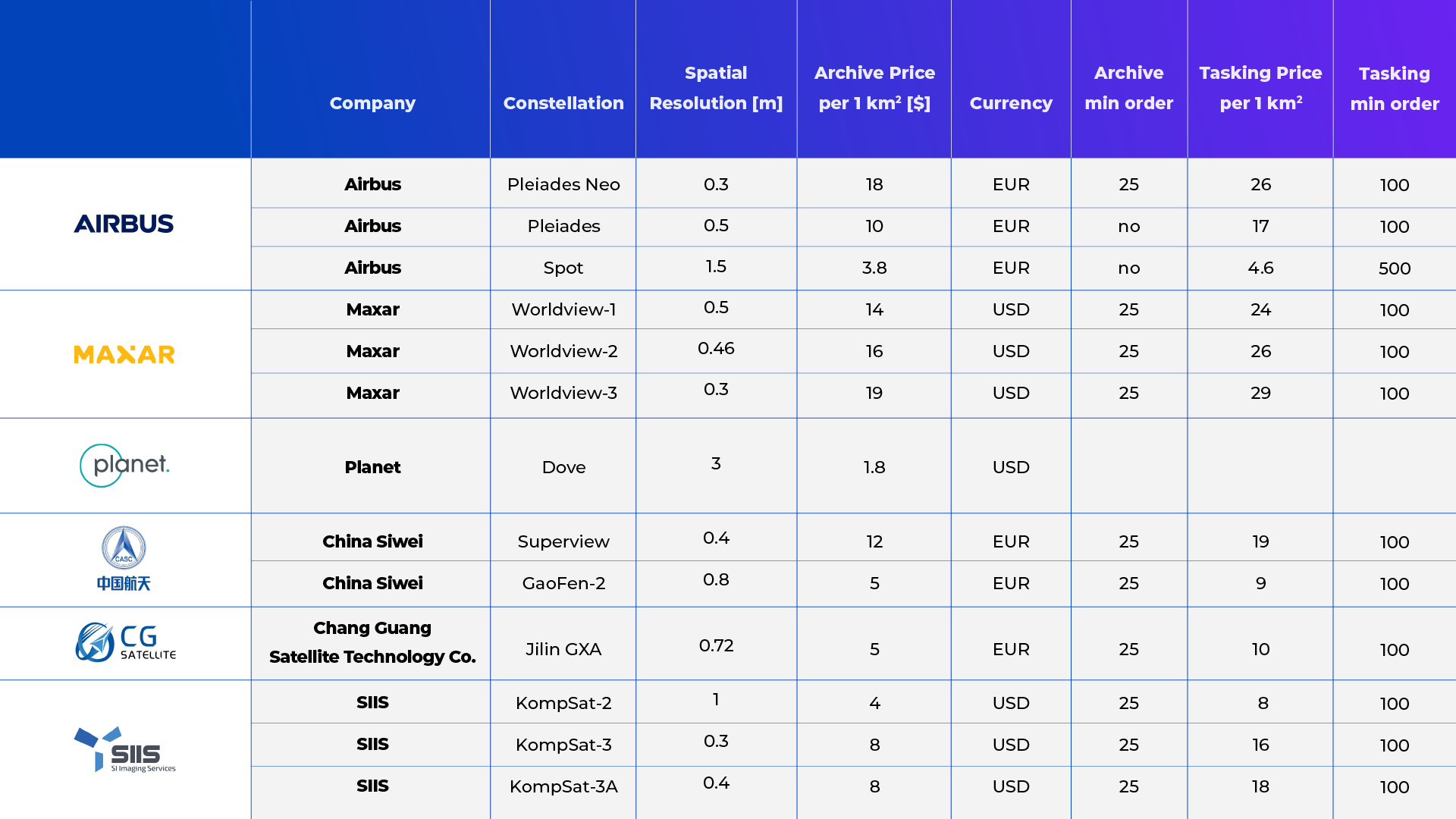
How can we achieve a sustainable, safer and fairer society for all? With trusted geospatial data, says EuroGeographics
It was recently announced that data from official national sources is one of Europe’s most valuable resources in achieving a sustainable, safer and fairer society. The showcase by members of EuroGeographics, the not-for-profit membership association for Europe’s National Mapping, Cadastral and Land Registry Authorities, highlighted their role in providing fundamental information to implement the United Nations’ Sustainable Development Goals (SDGs).
We sat down with EuroGeographics’ new Secretary General and Executive Director, Sallie Payne Snell, to learn more.
Firstly, congratulations! As an international not-for-profit organization, we’d love to learn more about your work representing providers of geospatial data. Could you tell us about what you’ll be focusing on in your new role?
Thank you! I’d like to start by emphasising what a great privilege it is to represent official providers of the trusted geospatial information that is fundamental to the everyday lives of people across Europe.
I am committed to championing its members’ data and expertise. Having previously led the Association’s operations, I’ve gained an in-depth understanding of the technological, legislative and operational challenges and opportunities facing National Mapping, Cadastral and Land Information Authorities and I will be using this to deliver membership benefits that support them in their national, European and global activities.
I’ll be focusing on enabling access to their high-value data and expertise through its integration into the infrastructures we rely upon as a modern society. This includes establishing partnerships with those who share our goal of using geospatial data for the public good; these are vital for meeting user requirements and finding solutions to common challenges.
We’re all about location here at Geoawesomeness. That’s why we were so excited to hear that EuroGeographics recently announced the pivotal role that location data plays in bettering the world. The showcase featured examples from Belgium, France, Germany and The Netherlands to demonstrate how location connects people with place for sustainable development, tackling climate change, creating digital twins, and developing intelligent transport systems. Could you share more about this dynamic between people and place?
Location is a powerful tool – it tells us where things happen but also provides the link between information and action. More than ever before, the world needs accurate data that it can trust is up to date, definitive and detailed – and it needs to know where to find it.
During our recent event at the European Parliament for MEPs and decision-makers, our members demonstrated how they provide context and clarity to information about people and places, so that we can gain insight and answers to some of the key issues facing society.
From integrating maps and data to provide insights for tackling climate change, providing information to support energy transition, and enabling multimodal transport strategies and digital transformation, we have a wide range of case studies on our website showing how members data and expertise play a key role in realising a sustainable, safer and fairer society.

The Sustainable Development Goals are crucial as a framework for the world to work towards. What role do you think geospatial data plays in us meeting them? And why is this new announcement about geospatial data so important to highlight?
Geospatial data enables the connection between people, their location and place, and in doing so allows us to measure where progress is, or is not, being made.
The United Nations recognises that a strong global geospatial infrastructure is an essential enabler for achieving its 2030 Agenda, but it’s not just the Sustainable Development Goals that depends on this information; sustainable development is also a priority objective for EU policy.
Data from official national sources is therefore one of Europe’s most valuable resources in gaining momentum towards a sustainable, safer and fairer society.
We work closely with colleagues in the European Parliament, Commission and its agencies, enabling them to access our members’ high-value data and expertise to realise a wide range of policies, including the EU’s Digital Decade and Green Deal. And as a friend of the EU Mission Adaptation to Climate Change, we fully endorse its charter and are committed to using our expertise and extensive network to strive towards climate resilience by 2030.
As the use of official geospatial data for the global indicators of the SDGs increases, what challenges do you foresee that may need to be overcome (e.g data access, processing capabilities, availability, cost)? How can the geospatial community contribute to solving these and what difference can we make together?
World leaders at the UN Sustainable Development Goals Summit, held recently in New York, expressed their alarm that their achievement is in peril.
We are now only seven short years away from 2030, and we are going through a time of crises and challenges – a global pandemic, conflict, and climate, food, fuel and global trade supply chain disruptions. Together these have contributed to a setback in delivering the Sustainable Development Goals – we know this because we have been measuring and monitoring our progress.
We obviously need to not only get back on track in leaving no-one behind, but also to get ahead of these crises. So, we need to understand where we are against the Sustainable Development Goals to target action. This is where geospatial data plays a key role.
The Sustainable Development Goals Report 2023 Special Edition highlights data challenges, calls for more inclusive data for development, and states the need to strengthen coordination within national data ecosystems.
At the United Nations Committee of Experts on Global Geospatial Information Management’s thirteenth session, we offered our support in enabling access to members’ high-value European geospatial data, sharing expertise and best practice, and demonstrating the use and value of location to provide a stronger and more inclusive development framework beyond 2030.
The UN-endorsed Integrated Geospatial Information Framework – or IGIF, which is being implemented by many of our members, helps to address these issues. The IGIF provides decision-makers with compelling evidence for strengthening geospatial capabilities in the context of meeting national priorities and global challenges. It enables the progress, measurement and monitoring of the Sustainable Development Goals by strengthening the management of national geospatial information to provide connections, context and clarity.
To fully realise the benefits for current and future generations, we encourage even greater use of official geospatial data for the global indicators of the Sustainable Development Goals. And, we strongly believe that the integration of geospatial data in the next development framework will not only make it stronger and more inclusive, but will also help realise the aspirations held by people around the world for a better future.
Why do you think it’s especially important that geospatial information comes from trusted sources in the modern age of misinformation? How does this impact everyday lives?
In uncertain times, authoritative map, cadastral and land registration information provides certainty to those responsible for making critical decisions. Trusted, transparent and interoperable public sector information based on fundamental rights and common values are key building blocks for a wide range of policies, including the EU’s Digital Decade and Green Deal, and the United Nations 2030 Agenda.
High quality and reliability is the calling card of EuroGeographics members, who provide much more than traditional maps. As the national authorities for official geospatial information in Europe, they use cutting edge technologies to collect, maintain and deliver high-value digital data and services to underpin the infrastructures we rely on as a modern society.
When we’re looking for somewhere, their maps pinpoint where to find it; when we’re buying property, our members provide secure registration, so ownership is certain; and when we need help, their data enables the emergency services to reach us quickly, saving time, and ultimately lives.
Whether it’s geospatial or land information, data and services provided by members of EuroGeographics are a fundamental part of our everyday lives: from apps, to ordering food deliveries; from online gaming to ensuring we pay the correct amount of tax: in fact, most of us use their information no less than 40 times a day, often without even realising.

Lastly, we know EuroGeographics is leading the Open Maps for Europe 2 (OME2) project. What’s involved in the project and how will it help with ensuring large-scale open data meets technical specifications for the UN Global Geospatial Information Management (UN-GGIM).
EuroGeographics and its members are already delivering high-value pan-European data through the Open Maps for Europe interface. We are building on this success through the OME2 project, which is co-funded by the European Union and responds to user needs for large-scale open data.
The project also supports the ambitions of the IGIF by aligning the technical specifications for large-scale open data with the core recommendations for content proposed by UN-GGIM: Europe.
OME2 will develop a new production process and technical specification for free-to-use, edge-matched data under a single open licence. Authoritative 1:10 000 scale data for 10 countries will be delivered via the user interface built by the award-winning Open Maps For Europe Project.
The prototype will provide three datasets, identified as key themes by users and defined as high-value in European Commission’s implementing rules for the Open Data and reuse of Public Sector Information Directive – administrative boundaries, transport and hydrography. OME2 will also enhance the five existing Open Maps For Europe datasets, including the pilot Open Cadastral Map.
Data is at the very start of the value chain, and the European Commission recognises geospatial as high-value data (HVD) offering a wealth of opportunities for reuse due to its compatibility with other datasets. By addressing the challenge of finding, accessing and licensing authoritative pan-European harmonised edge-matched, large-scale data, OME2 benefits both users and national providers of geospatial information.
For users, it saves time by providing machine-readable data as APIs from one central portal under one easy-to-understand open data licence. As a result, they will no longer need to visit individual Member State geoportals to access specific datasets, spend significant resources connecting them, or agree to multiple licences.”
For our members, who are recognised as important enablers of cross-border data applications and services, the prototype shows how public sector demand for geospatial information in all common data spaces of the European Strategy for Data can be met.
Furthermore, by allowing data to be easily uploaded, converted to the specification for each HVD theme, harmonised and edge-matched, OME2 will enable members to re-use techniques nationally and share good practices, advancing the data sharing tools needed to deliver free-flowing, interoperable data for the single market.
The OME2 project corresponds with Member States’ obligations to implement high-value data and will be completed at the end of 2025. It is being delivered by a consortium comprising: EuroGeographics, the not-for-profit membership association for Europe’s National Mapping, Cadastral and Land Registration Authorities; National Geographic Institute, Belgium; National Institute of Geographic and Forest Information, France; Hellenic Cadastre; General Directorate for the Cadastre, Spain; and Cadastre, Land Registry and Mapping Agency, The Netherlands.
More information is available at https://eurogeographics.org/
Did you like this article? Sign up to our newsletter!






